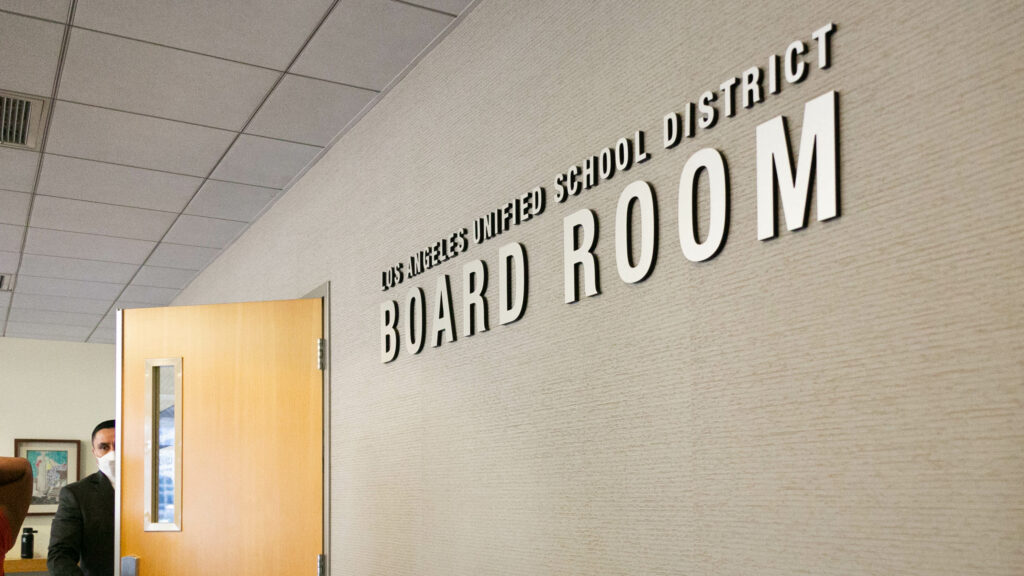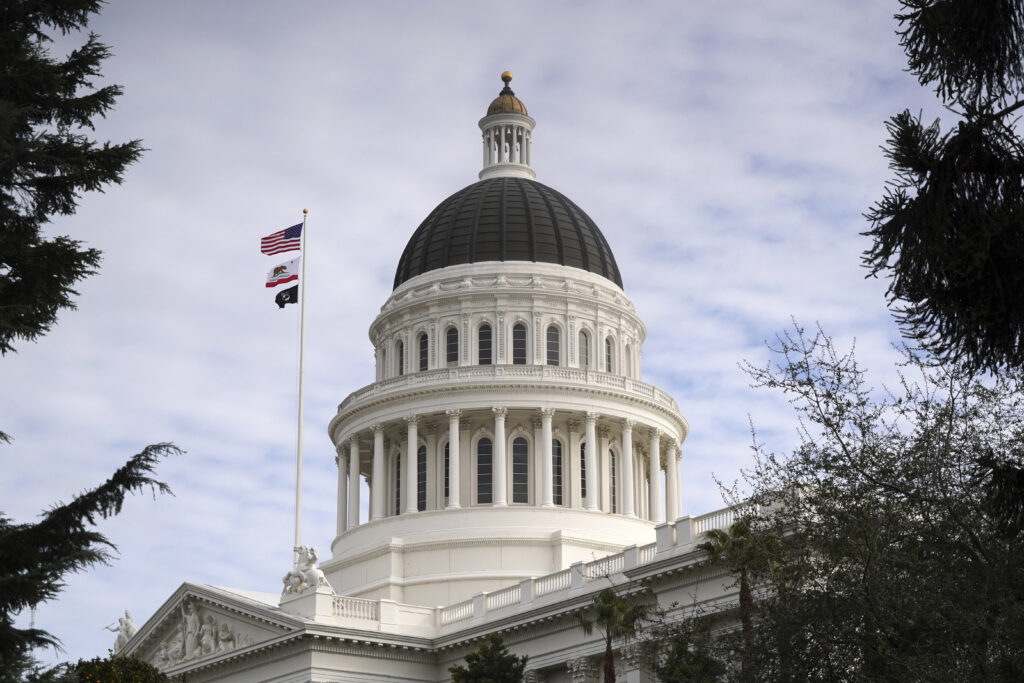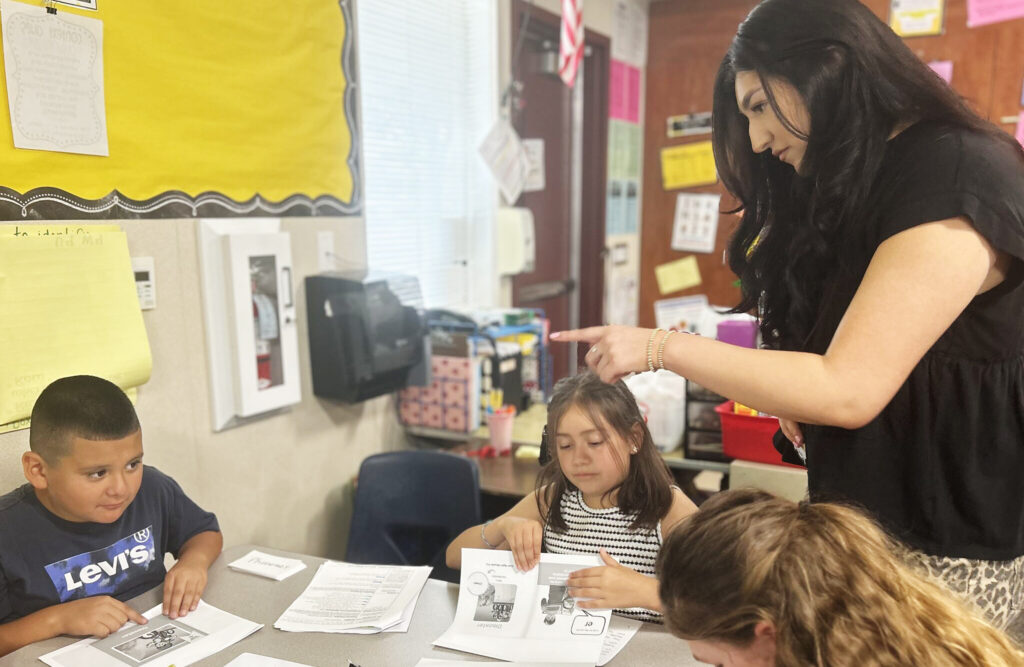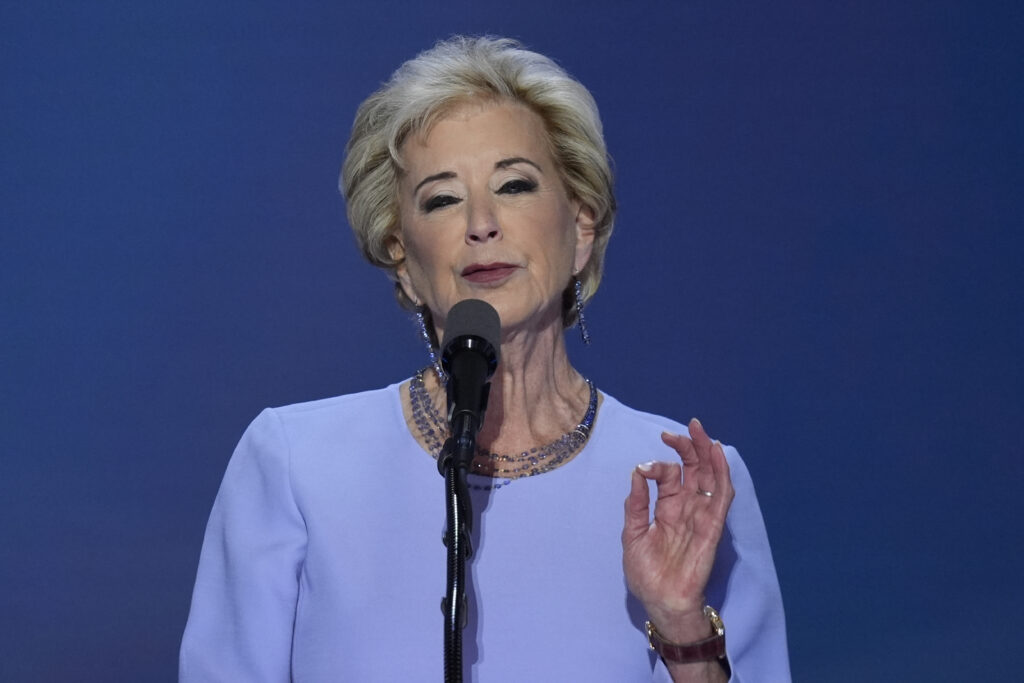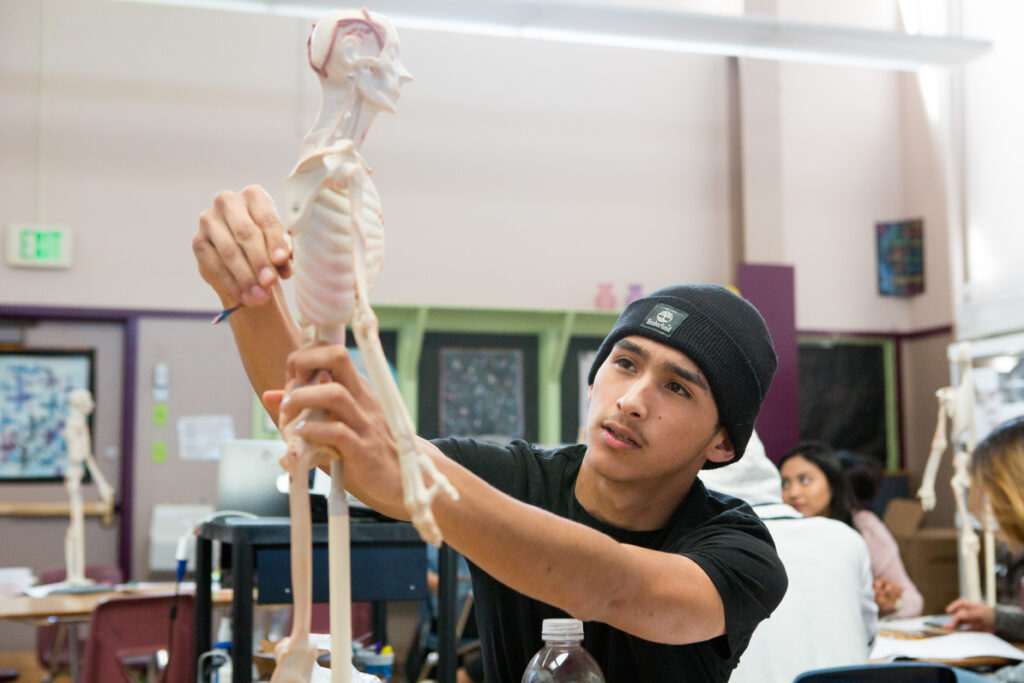
National University President Mark D. Milliron, right,,congratulates a graduating student at the university’s 2023 commencement.
Courtesy: National University
In the year since the U.S. Supreme Court handed down its decision to end race-conscious college admissions, the predicted impact has become a troubling reality. Many selective universities are reporting significant decreases in Black student enrollment this fall. This latest development continues a broader trend of declining Black postsecondary enrollment, which since 2010 has fallen at all U.S. colleges by nearly 30%.
These dire enrollment reports are emerging now as a growing number of states are eliminating diversity, equity and inclusion programs and services — and just four years after a nationwide reckoning on racial injustice. Whether colleges have become even more exclusive or if Black students are turning away from higher education, the results are the same: Our nation’s colleges and universities are becoming less diverse — and yet another barrier has been erected on the road toward increasing the number of Americans able to go to and graduate from college.
Despite bleak national trend lines, the state of California has just enacted a creative policy solution that will shine a spotlight on institutions that excel in educating and serving Black students. Senate Bill 1348, also known as the “Designation of California Black-Serving Institutions Act,” creates a state-level designation (BSI) to recognize the state’s public and independent colleges and universities where at least 10% or 1,500 students are Black.
The BSI designation is not just about enrollment numbers. It requires institutions to commit to providing essential services and resources to foster Black students’ academic success and meet their basic needs. For this reason, this proposal is a sound and logical policy prescription for California, which has the country’s fifth-largest population of Black people. It’s also a legislative innovation that other state and national policymakers should consider as American higher education is struggling to close completion and equity gaps and college demographics continue to grow more diverse.
The BSI concept draws inspiration from the success of historically Black colleges and universities (HBCUs) — postsecondary institutions established before 1965 with the principal mission of educating African or Black Americans. Today, the nation’s 107 HBCUs have an impressive track record. They have graduated 40% of the nation’s Black engineers, 50% of America’s black lawyers and 80% of Black judges. Perhaps more than any other institution in this country, HBCUs have helped create economic and social mobility for millions of Black Americans.
However, most HBCUs are at least 75 years old — the majority were established in the 19th century — and are rarely found outside the South. For newer colleges and universities outside the South that serve diverse populations, a BSI designation would strengthen institutions and communities in multiple ways. It would offer a state seal of approval to institutions that are committed to serving Black students and willing to hold themselves accountable for the results. It also would help policymakers identify colleges and universities to receive targeted financial support and other resources.
This shift is particularly relevant given the changing demographics of today’s college students. Nontraditional, working and military students are fast becoming the norm. A third of today’s undergraduates are 25 or older. A quarter of them are raising children. About 40% of full-time students — and three-quarters of part-time students — are working while they’re in school. Because so many students are older, working full-time or raising families, it’s essential that institutions adapt to this new reality by offering flexible schedules, stackable credentials and comprehensive support services.
The BSI designation could be a valuable tool for states beyond California. In states with substantial Black populations but few or no HBCUs (California has just one HBCU, Charles R. Drew University of Medicine and Science), it could help increase college access, improve completion rates and build a more skilled and educated workforce to fuel economic growth.
California’s proposal to recognize Black-serving institutions is a necessary — and long overdue — step toward acknowledging their critical role in reversing the decline in Black student enrollment and increasing access to higher education for historically underserved communities. Just as HBCUs have broadened access to education, California’s Black-serving institutions bill will reward colleges and universities statewide that are doing the vital work of serving the underserved students our economy and society need.
By investing in institutions committed to supporting Black students and other underserved groups, states can help foster stronger, more inclusive colleges and universities. Ensuring that more Black learners are on track to access and complete higher education will help California and other states produce the talented and inclusive workforce they need to compete in today’s fast-changing economy.
•••
Mark D. Milliron, Ph.D, is president, National University, a nonprofit private university based in San Diego with campuses across California as well as online. Thomas Stewart, Ph.D, is executive vice president and co-chair of the Social Justice, Equity, Diversity and Inclusion Council, National University.
The opinions expressed in this commentary represent those of the authors. EdSource welcomes commentaries representing diverse points of view. If you would like to submit a commentary, please review our guidelines and contact us.

